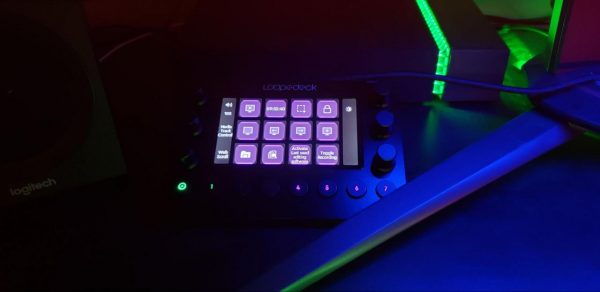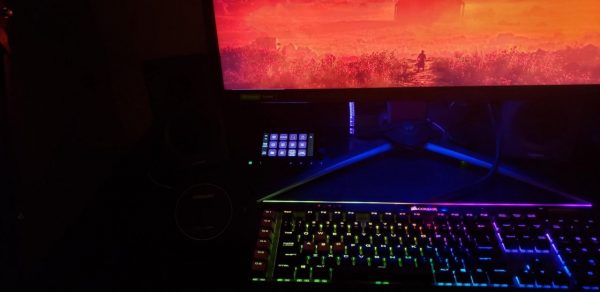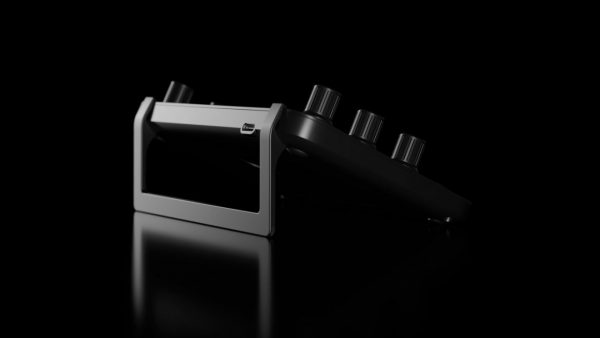If you?re like me, you?re always looking for new technology that makes your life easier. Specifically, I seek out devices to streamline processes on my PC. I have had the opportunity to check out a few different devices in the past, including some different ?stream deck? type devices. Recently, I was able to get my hands on the newest Loupedeck hardware, the Loupedeck Live. The Loupedeck Live has taken a piece of peripheral hardware and made it an integral part of my PC setup. After several weeks with the Live, I do not think I could go back to life without it.
To start things off, I want to talk about the device itself. The Loupedeck Live is small and unobtrusive. I positioned it under the left side of my monitor, so I can use my non-dominant hand to adjust things while still keeping my other hand on my mouse. The device has a touch screen with 12 individual boxes, as well as two vertical touch displays on either side. On the outside of that, there are 3 knobs on each side that allow for turning or for a button press. Below the touchscreen there are 8 buttons for switching between profile settings. The brightness of the touchscreen can also be adjusted for low light/high light environments. The knobs and buttons feel great too, with enough tactile feedback to make the device feel very high-end (which it is).
The only negative thing I have to say about the device itself is that the included stand does not feel quite as high quality as the rest of it. The stand has to be attached manually, it is not a native part of the device, and snapping it into place can make it feel like you are going to break it. Once it is attached, it works just fine, but an adjustable stand natively attached might have felt a bit better.
Included with the Loupedeck Live is a braided USB Type-C cable, as well as an adapter that allows you to plug the USB Type-C end into a USB Type-A port. The connection end of the cable that plugs into the Loupedeck Live itself is a 90-degree angle connector, which makes the setup even more visually appealing and unobtrusive.
One of the absolute best features, out of the box, is the smart switching ?Dynamic Mode?. This mode allows the Loupedeck Live to automatically read which program you are currently using, and switches to the pre-set function profile for that program. Jumping between a streaming setup with OBS to an editing setup with Adobe Premiere Pro is seamless, and you have all of your necessary tools right at your fingertips. In OBS for example, you will immediately see a host of button options to start recording, change your sources, view your chat and create clips. If you switch to a music application that is supported, like Spotify for instance, you will be able to turn shuffle, repeat the current song, ?like? a song, mute the music, or even cast to a new device.
Editing video in Premiere Pro is also a breeze. The Loupedeck takes full advantage of the dials, allowing you to scrub through video with precision that is simply lacking with a mouse, even for experienced users. In addition, being able to clip video that you want, adjust audio levels, or assign buttons to adjust video settings is an incredible time saver. Everything about the Loupedeck Live is designed to help you do the things you are already doing, but easier and faster.
If the application you want to use is not one that the Loupedeck Live supports natively, don?t worry. You can create your own custom profiles for applications that you will be using. For example, I use Audacity quite a lot, and the Live does not currently have a default profile for it. I was able to link Audacity within the Loupedeck software and build my own roster of macros that I find useful. Once I had done that, the Loupedeck Live remembered my profile and began automatically switching when it detected Audacity as my primary application in use.
I will point out that the Loupedeck software is probably my least favorite thing about the whole system right now. It took me quite a lot of time to learn exactly what I was able to do, and how to do it. Once you master it, there is not anything particularly lacking, but the learning curve is steep. There are an overwhelming number of options, and the software is not particularly great at explaining exactly what they all do. There is also a surprising lack of preloaded images for icons. If you are used to the Elgato Stream Deck, you might expect some standard logos to be available, but there are not. If you want to add more than just a standard text logo, or the limited preloaded ones, you will have to create custom action commands that will replace the pre-existing ones. This is by no means a dealbreaker, but it does get a bit tedious.
One other important thing to note, especially for folks looking primarily for a device to help them with streaming, is the price. The Loupedeck Live retails for $269, which puts it about $100 above some of the comparable devices that streamers might be looking for. If streaming is your only goal, the Loupedeck Live might be more machine than you need. It would be like buying a performance car simply to drive to work. If you think you might ever delve into video editing, or photo editing, or any other of a number of applications that the Loupedeck Live can assist you with, it is definitely worth it. I have fallen absolutely in love with the Loupedeck Live, and strongly recommend it to anyone looking for a multi-purpose power console, or even a streamer with deep pockets who wants a future-proof device that can truly do it all.
Note: Loupedeck provided us with a Loupedeck Live for review purposes.






